Bian yu, professor of architecture:
Why is natural light so important to architecture?
1. Natural light can keep people healthy physically and psychologically, and people need the full spectrum radiation of the sun;
2. The full and reasonable use of natural light can save energy and protect the environment;
3. The use of natural light is an important means of architectural art creation.
As long ago as ancient people learned to build houses, they learned how to make holes in the roof or walls to collect natural light.
The round hole nearly 9m in diameter on the huge dome of the pantheon in ancient Rome and the shingles less than one foot square that are commonly used in folk houses in China all show the wisdom of lighting by predecessors.
Many works of famous modern architects, such as Wright, le corbusier and Louis kahn, are masterpieces that use daylight lighting and render atmosphere.
pantheon
Emperor hadrian built the pantheon in Rome, Italy, between AD 120 and AD 124. The building is an impressive example of the engineering prowess of the ancient Romans.
The dome's circular eye (an 8.2m diameter circular hole) lets sunlight into the pantheon, whose floors and walls are made of brightly coloured marble.
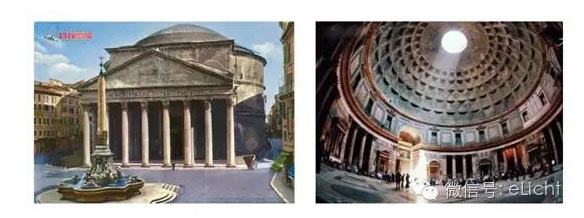
Kimbel gallery by Louis kahn
A classic case of combining natural lighting design and space modeling.
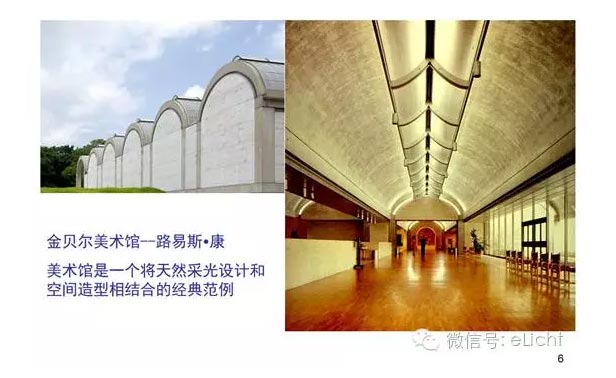
Influence of weather on light climate and illumination
In the room of natural lighting, indoor light can change as the change of outdoor weather, want to design good indoor lighting so, assure light needs, need to understand knowledge of light climate.
What is light climate?
Light climate refers to the average condition of natural light formed by direct sunlight, diffuse light from the sky and reflected light from the ground.
Direct sunlight: when sunlight passes through the atmosphere, it passes directly through the light hitting the ground. Direct light is large and directional, creating shadows behind the object.
Sky diffused light: when sunlight passes through the atmosphere, it encounters air molecules, dust, water vapor and other particles in the atmosphere, generating multiple reflections and forming sky diffused light. The sky diffuses light to make the sky have certain brightness, the illuminance that forms on the ground is small, have no direction, do not form a shadow.

Natural light = direct light + scattered light
The direct light will increase with the increase of the solar height Angle, and the scattered light will change quickly when the solar height Angle is small, and change little when the solar height Angle is large.
When the whole sky is cloudy, only the sky diffuses light, while when the sky is clear, the natural light consists of direct sunlight and sky diffuses light.
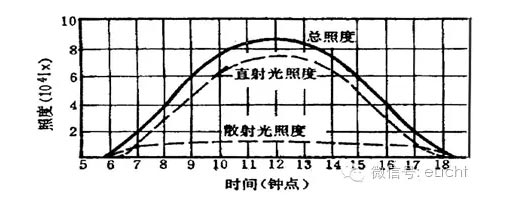
Generally, daylight (natural light) mentioned in daylighting design refers to sky light, which is the main light source of architectural lighting.
The intensity of direct sunlight is extremely high and changes quickly. In order to prevent glare or overheating of the room, the working room often needs to cover the sunlight, so direct sunlight is not considered in the calculation of lighting.
Change of outdoor light climate in different weather
The illumination on the ground comes from direct solar light and diffuse sky light, and the ratio varies with the height of the sun and the weather (whether the clouds in the sky cover the sun or not). Generally, the number of clouds in the sky divides the weather into three categories:
Sunny days - cloud cover 0~3/10
Cloudy days -- 4/10 to 7/10 cloud cover
All overcast - 8/10~1 cloud cover
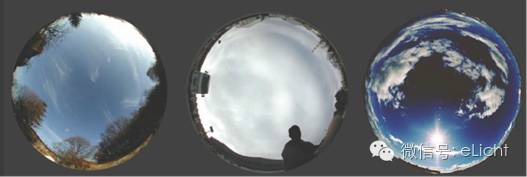
The sunny ground illumination mainly comes from direct sunlight. With the increase of the sun height Angle, the proportion of direct sunlight illumination in the total illumination also increases.
On an overcast day, the sky is almost entirely diffused, with cloudy skies in between.
Several factors that determine the illumination of the ground are:
Angle of sun altitude
(2) the cloud
(3) the ground reflection ability
(4) atmospheric transparency
CIE standard all-overcast sky (all-cloud sky)

Overview of light climate in China
China's daily light rate (the ratio of the number of hours the sun appears to the number of hours it is likely to appear) gradually decreases from the north and northwest to the southeast, and the sichuan basin area is the lowest. Cloud cover gradually increased from north to south, the least in southern xinjiang, less in north and northeast China, and more in the middle and lower reaches of the Yangtze river. The cloud shape, the south low cloud northward gradually is high, the medium cloud primarily.
In the natural light intensity, the southern sky diffuses more light intensity, while the north and northwest are dominated by direct sunlight.
Lighting standards and application of different scenarios
Calculation method of lighting coefficient
Lighting standard is the quality criterion for evaluating natural light environment, and it is also the main basis for lighting design.
(1) lighting coefficient:
The quality of natural lighting is not judged by the absolute value of illumination, but by the lighting coefficient.

En - natural light at a certain point in the room
Ew - the illumination produced on a horizontal level by an open sky at one time outside
(2) standard value of lighting coefficient:
Different conditions of the target requires different illumination, and illumination in a certain range of the higher the better, the higher the illumination, the higher the work efficiency. However, the investment of high illumination is large and the cost is high, so the determination of illumination needs to consider the needs of visual work, as well as the economic possibility and technical rationality.
(3) uniformity of illumination:
The uneven illumination distribution in the visual field will easily cause eye fatigue, visual function decline, and affect work efficiency. The uniformity of illumination is expressed as the ratio of the minimum illumination to the average illumination on the work surface (or the ratio of the minimum lighting coefficient to the average) and shall not be lower than 0.7. The CIE recommendation is 0.8.
(4) glare limit:
Glare can damage vision and cause discomfort. When the side window is in a low position, it will cause uncomfortable glare to the horizontal working sight. So the standard puts forward the evaluation standard of side window discomfort glare. High position of roof lighting, often outside the field of vision, not easy to cause glare, the standard is not restricted.
Application of natural lighting in different scenes
The core of architectural lighting is the design of Windows. In application, lighting, heat insulation, sound insulation, economy and other requirements should be considered comprehensively.
Lighting requirements: full illumination, no glare, and external line of sight communication
Insulation and sound insulation requirements: Windows as small as possible, special glass and window structure
The practical function of window:
Natural light introduction
Controlled natural ventilation
Communicate indoor and outdoor vision
The important link of architectural art creation
The type of lighting window:
Side window: single side window, double side window, high side window
Skylight: rectangular skylight, jagged skylight, flat skylight
Side window
Unilateral window: the most common form, simple structure, convenient arrangement, low cost, good line of sight communication; Directional perfusion is good for light and shadow modeling. Effectively avoid light curtain reflection and uncomfortable glare; Daylight illuminance decreases rapidly with the increase of distance, and the illuminance is the lowest at 1m from the inner wall, with uneven distribution of illuminance.
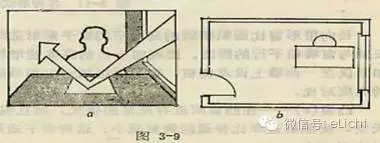
Double side Windows: double the depth of exposure by opening Windows on opposite side walls
High side Windows: used for warehouses and expo buildings
Bay window: the illumination near the window is sufficient, but the roof affects the penetration
Corner window: window and metope brightness contrast soft, have special lighting effect
Note when using side Windows for lighting:
The position of the window will affect the uniformity of lighting in the direction of the room depth.
Different ways to reduce the window area will cause different changes in the amount of indoor lighting.
On cloudy days, the orientation of Windows has no influence on indoor lighting.
On sunny days, the indoor lighting conditions are different for rooms with different orientations.
In order to cope with the drastic change of lighting intensity of the side window, measures can be taken to improve the lighting intensity in the depth of the room:
Improve the window position, can improve the depth of the room illumination, improve uniform performance;
It adopts opalescent glass, glass brick and other diffused pervious materials, or refracted glass that can refract light to ceiling, so as to improve illumination at the depth of room, increase room depth and reduce the cost.